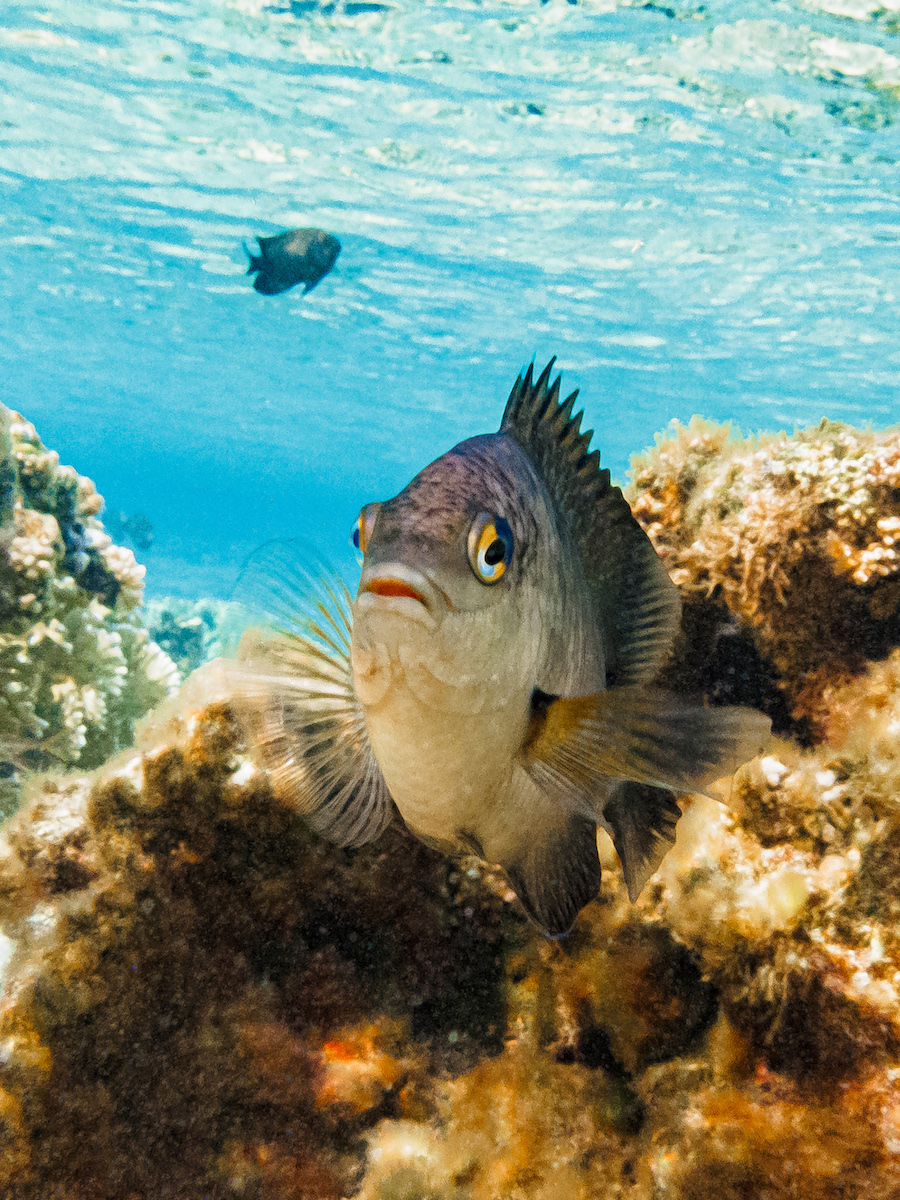
I swam to that small coral reef almost every morning, but even after more than a week of my stay at the Red Sea I hadn’t made friends with its inhabitants. Dark, about ten-centimetre-long fish that shared it, didn’t show any intention to build a friendship. When I approached any of them, it would come out of the reef, spread its fins and with a threatening expression confront the underwater camera case. More than once it even attacked the glass covering the lens.
I identified these brave fish as dusky farmerfish (Stegastes nigricans), and I spent one afternoon studying papers dedicated to their research. The most interesting articles were signed by the Japanese biologist Hiroki Hata. He studied the dusky farmerfish first at the lagoon near Okinawa and later in other parts of the world. I don’t know how much time he spent with a snorkel under the water, but it had to be really significant. However, his research discovered fascinating knowledge about this fish.
There are hundreds of species of damselfish, and many of them defend their territories. They protect both their eggs’ clutches as well as the growths of algae they feed on. The dusky farmerfish, however, not only defend their part of the coral reef, but they are also with no exaggeration undersea farmers that take care for their undersea fields with unprecedented consistency. Mostly thanks to Hiroki Hata we know now, that although various populations of dusky farmerfish slightly differ in their farming activity, generally it is true that they diligently weed the growths of red algae of genus Polysiphonia. Another, particularly green algae, which tend to grow in their gardens, they consistently pull out and carry away, since the red algae are for them much more digestible that the green algae.
But that is not all yet. Thanks to quite simple experiments Hata discovered that if not for the care of dusky farmerfish, the growths of the red algae of genus Polysiphonia would quickly disappear under the onslaught of the competing organisms. And on top of that it turned out that in various parts of the world the dusky farmerfish grow several related species of these red algae, which don’t occur anywhere else but in their gardens! So, they are as dependent on their fish farmers as, let’s say, a cabbage is on the care of human farmers. This is something incredible!
I must tell you that after I had read all of this, the visits to the colony of dusky farmerfish became even more interesting for me, and I felt admiration for both the dusky farmerfish and Hiroki Hata.


